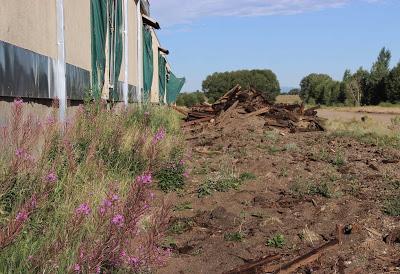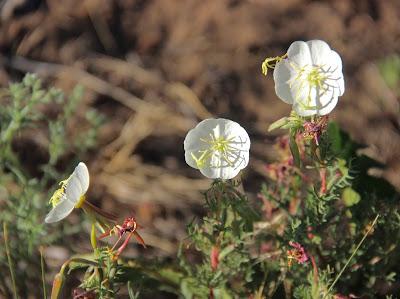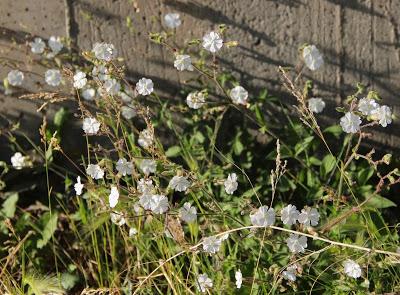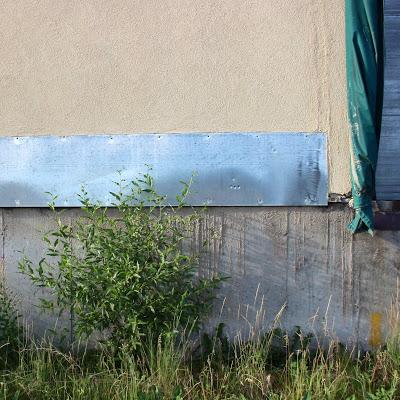
Year #25, dog #3.
For 25 years we’ve walked the dirt road to the river—a morning ritual. It runs along railroad tracks that serviced the old packing sheds. For the last two years, the tracks have been disappearing, bit by bit (I suspect this is someone’s side job). Now the rails are gone, and ties lie in heaps. Much of the thistle–tumbleweed vegetation has been bulldozed away.With bare soil, more sunshine (less thistle), and lots of late spring and summer moisture, the old track bed has become a garden of pioneering plants. In our yards we call them “weeds” but here they are beauties—high-impact beauties in fact, given the surrounding destruction and decay.

I found one hairy evening primrose, Oenothera villosa. It's a common colonizer of open areas along the river, about a quarter of a mile away, and I bet there will be more here soon. The yellow flowers appear to open in the evening and close in the heat of midday, so who are its pollinators if not moths? Or do moths notice yellow flowers? So much to learn.






Crown-like leaves?
Against the wall stood another flower of the night—white campion, Silene latifolia. Wikipedia notes “it is also named the Grave Flower or Flower of the Dead in parts of England as they are seen often growing on gravesites and around tombstones.” White campion is dioecious, with male and female flowers on separate plants. This one's a guy—just stamens in the flowers.




Narrowleaf cottonwood, Populus angustifolia. Its parents probably are among the trees along the river.


Meadow foxtail, Alopecurus arundinaceaus, a non-native that usually grows in wet meadows.
The biggest surprise was fireweed, Chamerion angustifolium (other names include rosebay willowherb and blooming sally). It’s a famous fire-follower, growing luxuriously where fire has burned off both the tree canopy and ground cover, exposing bare dirt in full sunshine. But it also thrives on other kinds of disturbed sites.

Purple and green, my favorite color combination.

The long narrow pods are loaded with tiny seeds ... as I found out later.
I collected flowering stems from some of these beauties, and took them home for closer examination … and more surprises!To be continued …
